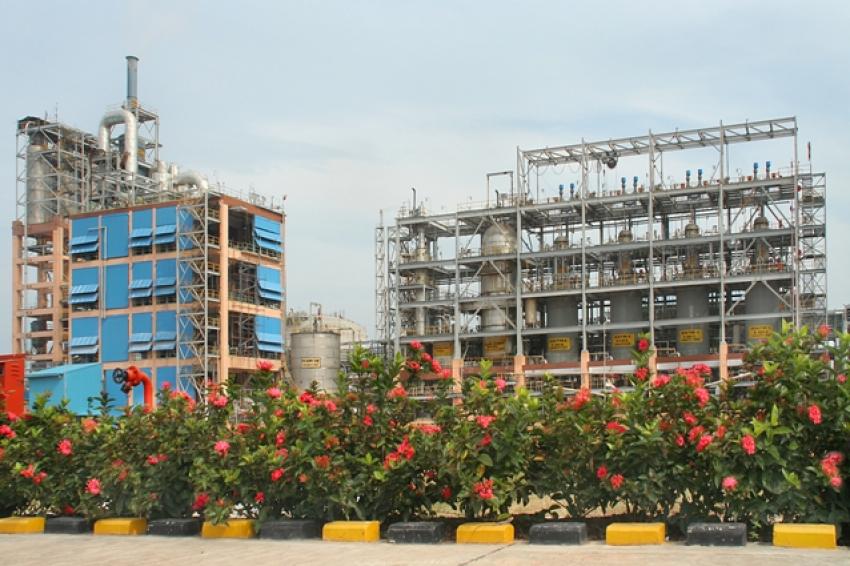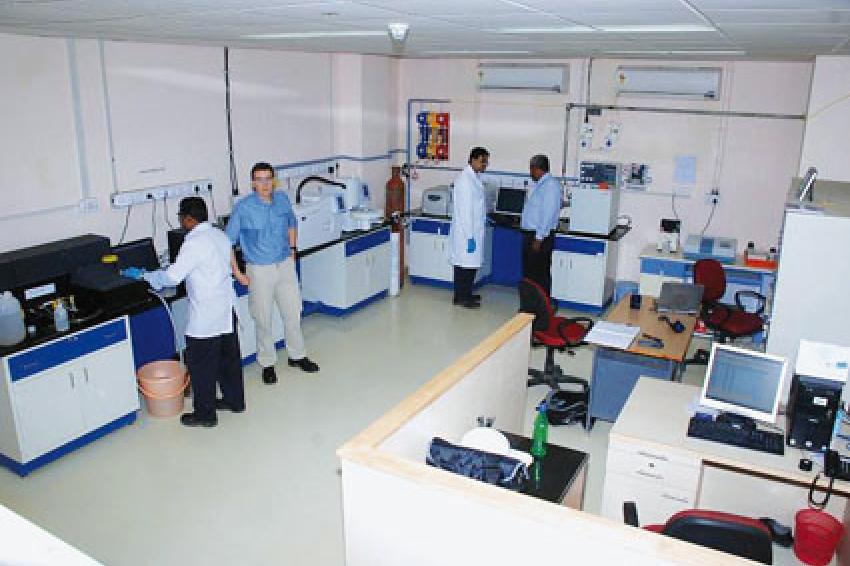Integration Is The Key
Chemplast Sanmar New PVC Resin Plant Installation in Cuddalore
Groundbreaking Project - When planning a new chemical plant, the engineers at Chemplast Sanmar had to consider many aspects such as safety, quality, efficiency, law and the environment. They proved that it is possible to meet all these requirements with state-of-the-art technology.
For their greenfield plant in Cuddalore, India, Chemplast chose the Foundation fieldbus H1 High-Power Trunk concept to achieve an outstanding production plant. The complete fieldbus equipment and safety barriers were supplied by Pepperl+Fuchs India. This report gives a basic overview of this groundbreaking project.
Chemplast Sanmar, the flagship company of the Sanmar Group, is a major player in the chemical industry in the state of Tamil Nadu, India. Chemplast manufactures a variety of high-quality PVC (polyvinyl chloride) resin products having a wide range of end-use applications.
Background Details
For their greenfield project in Cuddalore, Chemplast set up a Foundation fieldbus H1 environment to meet the state-of-the-art technology. The facility, commissioned in September 2009, has an annual capacity of 170,000 tons. This greenfield project is the largest chemical project to come up in the state of Tamil Nadu for over a decade. Chemplast Sanmar's aggregate capacity of 235,000 tons makes it one of the largest PVC producers in India.
The new PVC plant was licensed by the British company Ineos Vinyls and engineered by Jacobs H & G, which is located in Mumbai, India. The plant was designed according to the highest-quality standards known today. These standards are evident in the plant's highly-sophisticated quality control lab, foolproof safety system, and environmental management system. For a smooth end-to-end automation of batch process as well as continuous process production, Chemplast selected a control system from one of the world's leading DCS vendors, Honeywell.
Five control stations were installed with redundant controllers and a hybrid system which is capable of communicating via both, HART and Foundation fieldbus H1 protocols. Pepperl+Fuchs India partnered with the DCS vendor to develop the fieldbus infrastructures. FieldConnex Power Hubs, power supplies, Advanced Diagnostic Modules (ADM) and Segment Protectors are integrated to form 82 Foundation fieldbus segments.
Design Phase
During the design phase, the project team selected the Foundation fieldbus network type as well as all corresponding components and field devices. In order to fulfill Chem¬plast's functionality requirements, it was necessary according to the latest rules to verify that all instruments have the Fieldbus Foundation tickmark.
With the proper segment design, the type of cables and cable lengths etc. could be selected and planned accordingly. Field device vendors received all necessary information at an early stage, allowing the instrumentation to be configured up front. Finally, Honeywell Technologies in Bangalore performed a final "Host Integration System Test" for the complete system before the installation phase started.
Chosen Topology
For this plant, the High-Power Trunk concept was chosen. With this topology, a main line (the trunk) carries energy and data into the field. The energy and data is distributed with one device each connected to a branch line (the spur). A fieldbus network is divided into multiple segments, which are usually electrically independent and can have an overall cable length of up to 1,900m each.
At Cuddalore, field devices are located in Zone 2. Using spurs, the field devices are connected to Segment Protectors which provide short-circuit protection to the trunk line.
The trunk terminates in a cabinet located in the safe area. This is also where the FieldConnex Power Hubs and Fieldbus Interface Modules (FIM) are installed. These power hubs are designed especially to fit the chosen DCS system. The power hubs deliver high output power, great signal quality, and redundancy.
The Advanced Diagnostic Module (ADM) is a plug-in module for the power hub and makes the Foundation fieldbus H1 physical layer manageable. ADM automates commissioning and documentation, monitors the fieldbus segment online, and identifies faults in real time. ADM automatically triggers alarm messages and allows remote access for troubleshooting from the control room. With surge protection, plant availability has increased, as this protection eliminates or at least reduces power surges to ground potential.
Installation And Commissioning
Excellent preparation in the design phase helped speed up installation and commissioning. Completing cable-laying work as well as checking and validating the loops was achieved very quickly and communication worked flawless right from the start.
Fieldbus installation is based on digital communication, which has a high accuracy and enables better control of process parameters. By using Foundation fieldbus technology, Chemplast saved plenty of time during commissioning. Compared to conventional instrumentation, fieldbus instrumentation costs were marginally higher. This cost was compensated by the reduction installation and commissioning time of these devices.
Experiences during this project show that the Foundation fieldbus device information is comprehensive and easy to access.
Troubleshooting was very easy because of the availability of a host for field device diagnostics tools. Additionally, the Advanced Diagnostic Module was a great support for monitoring the physical layer and could be operated comfortably using Chemplast's asset management system. The ADM monitored the physical layer for an error-free operation of the control system. If any failure occurred, ADM guided the user to possible causes and remedies using actionable information in plain language.
Since then, the PVC plant runs smoothly. Chemplast is very satisfied with the collaboration, the course of the project and its result.








